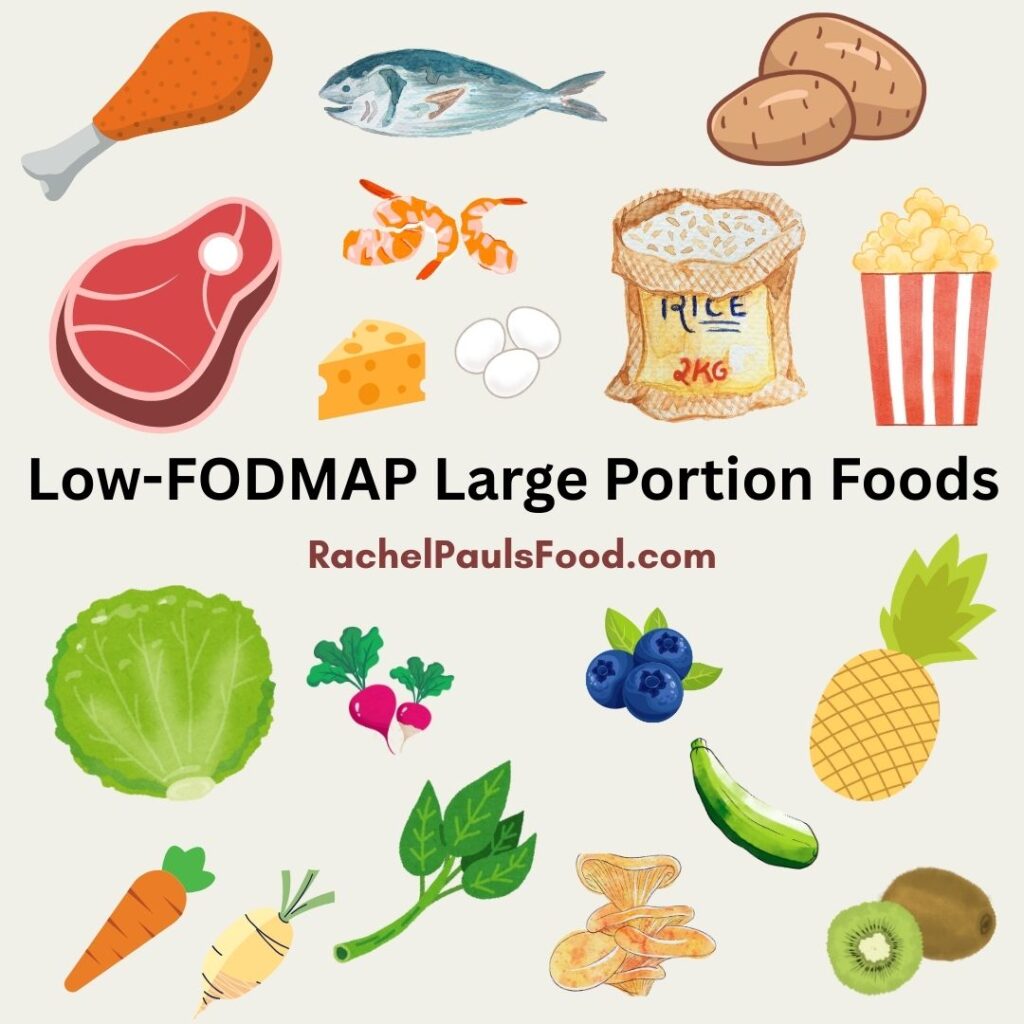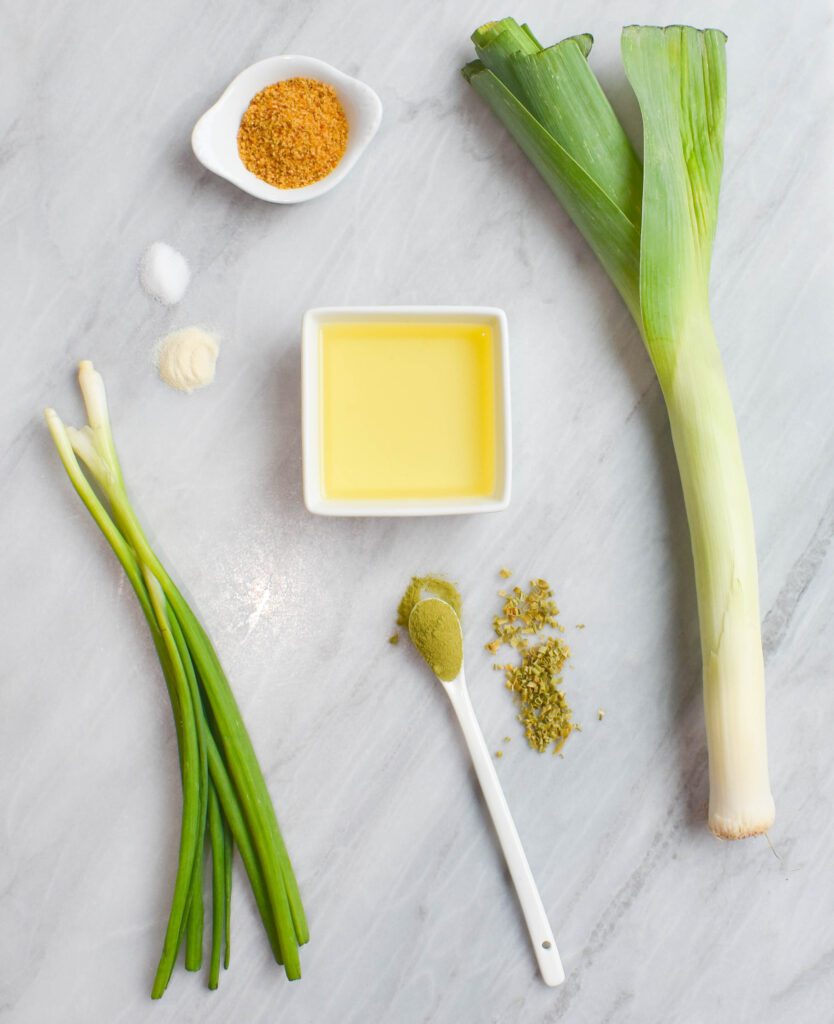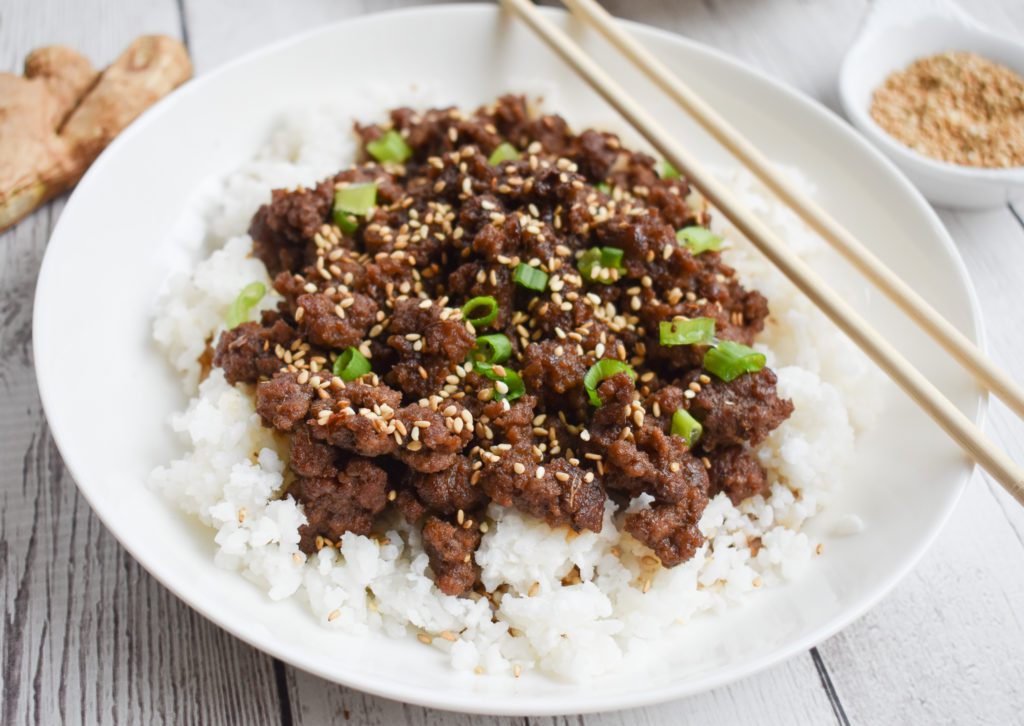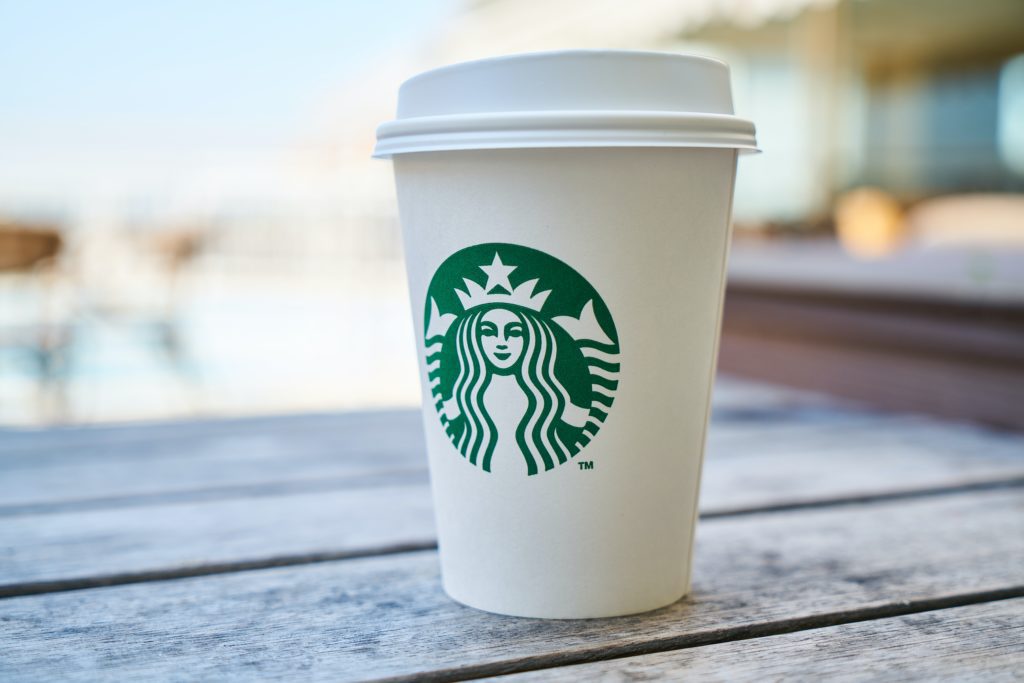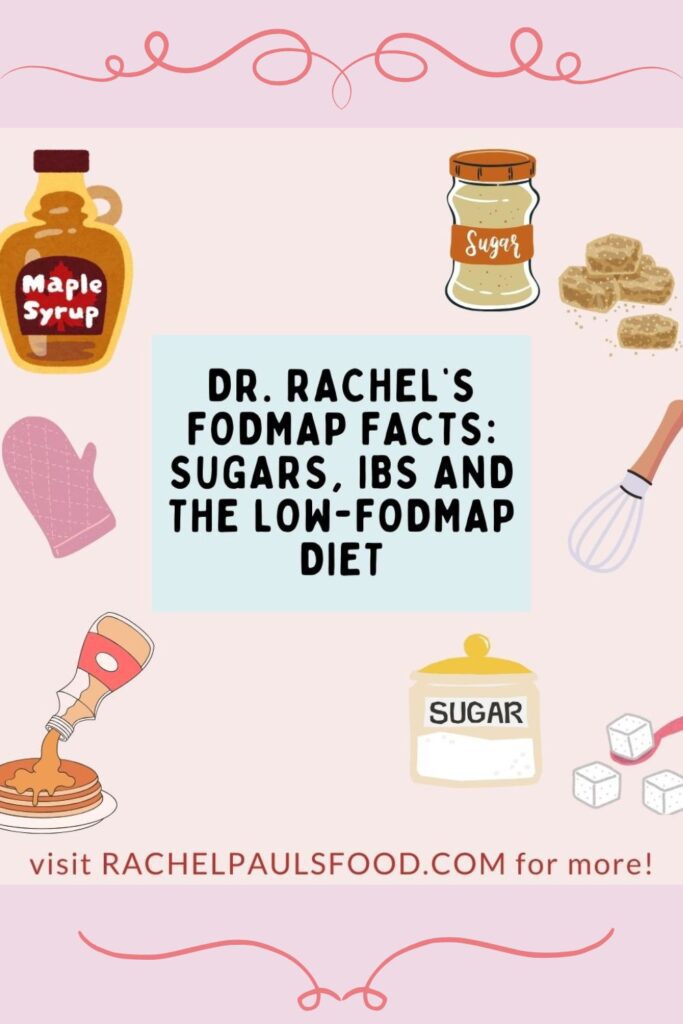
Is sugar low-FODMAP? What about sweetness and other syrups? Learn all you need about sugar to keep your IBS and gut healthy.
Such an important topic. Sugar and sweeteners on the low-FODMAP diet.
As an IBS-recipe blogger (and doctor) with a sweet tooth, I frequently get questions about whether sugar is ‘allowed’ on the program.
Since this is a source of confusion for many, I wanted to clarify a few concepts:
- The low-FODMAP diet is NOT a ‘diet’ to lose weight.
- It is not ‘low-sugar’, or ‘sugar-free’.
- Some sugars, syrups, and sugar-free alternatives are low in FODMAPs.
- Others should be mostly avoided.
It depends on their chemical composition.
Let’s back up for a minute, and review the concepts behind the low-FODMAP diet.
For my tips on eating out on the low-FODMAP diet, see these posts:
- Dr. Rachel’s Low-FODMAP Fast-Food Options (Because Low Doesn’t Have to Mean No)
- Low-FODMAP Options at Starbucks
- Dr. Rachel’s Low-FODMAP Menu Options at Chipotle and Taco Bell; Because Low Doesn’t Have to Mean No
What are FODMAPs?
The acronym FODMAP was coined in around 2006, to encompass a group of fermentable carbohydrates that frequently trigger symptoms in IBS patients. These were first described at Monash University in Australia.
Here is what the acronym stands for:
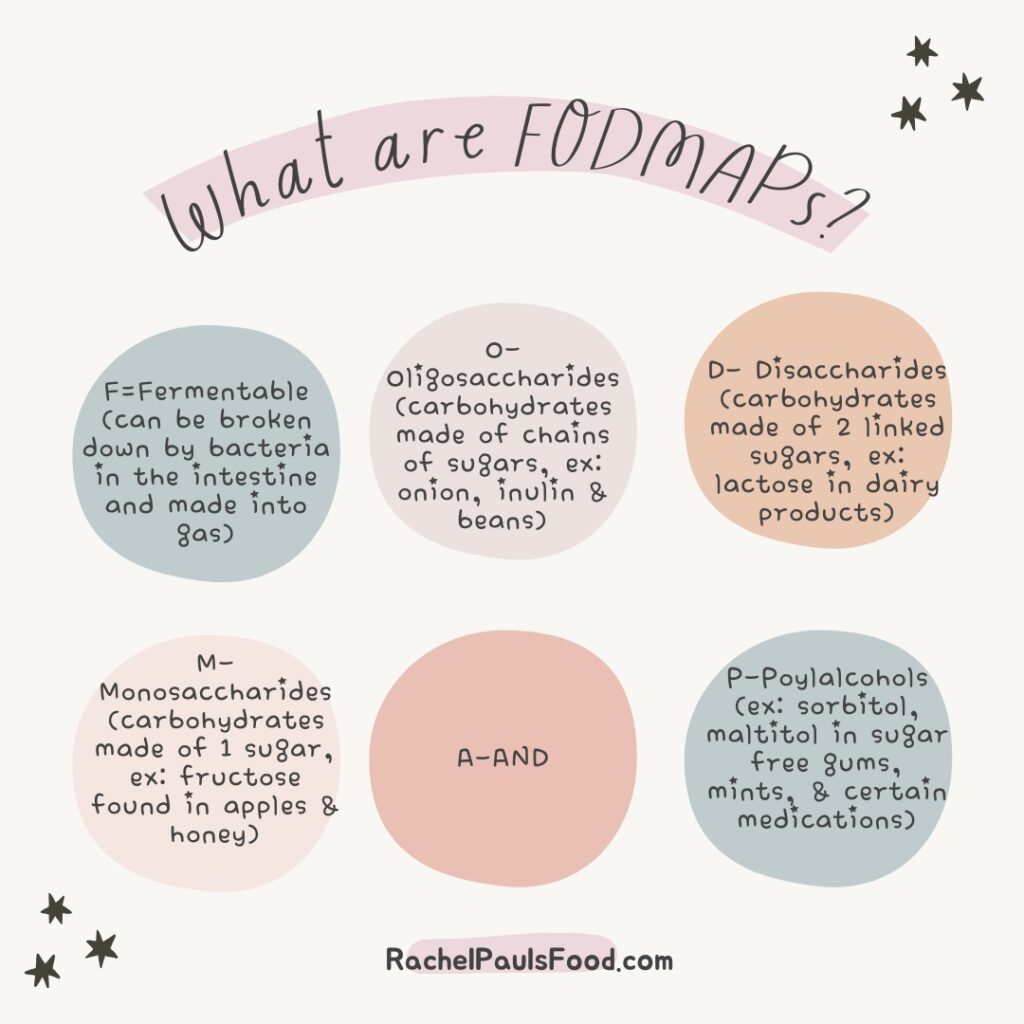
The low-FODMAP diet served to eliminate all those noxious carbohydrates, in order to eliminate the gas, bloating, constipation, and diarrhea associated with them.
Sugars are carbohydrates. Some are disaccharides, some are monosaccharides, and some are polyols. However, not all are fermented in our gut, or trigger IBS symptoms in small quantities.
“Not all sugars are fermented in our gut, or trigger IBS symptoms”
Let’s review some examples:
- Fructose: Fructose is a monosaccharide. It forms the ‘M’ in the acronym above. Fructose is considered a high FODMAP sugar, and will be restricted during the elimination phase. Check for this ingredient (and high-fructose corn syrup) on labels.
- Glucose: Glucose is a monosaccharide, but it is not high-FODMAP. It is easily absorbed without fermentation in the gut, and is not restricted on the diet.
- Sucrose: Sucrose is a disaccharide, made up of equal parts of glucose and fructose. The good news about that is, the glucose helps move the fructose molecules through the digestive process. Thus, there is not an ‘excess’ amount of fructose floating around to be fermented by your intestine. Happily, sucrose is not considered high FODMAP.
- Sorbitol: Sorbitol is a polyalcohol. Polyols are poorly broken down in the intestinal wall, and can cause water movement (diarrhea), and discomfort. Sorbitol is restricted on the FODMAP diet.
Bear in mind that IBS is complex, and symptoms are caused by multiple factors. Time of the meal, size of the meal, excess sugar and fats, caffeine, alcohol, and personal stress may contribute to GI discomfort.
Overconsumption of sweets is often a gut irritant, so be aware of your personal thresholds, in addition to FODMAP content. I recommend that when eating for IBS, the sugar intake should be modest. Nevertheless, we are individuals, with our own tolerances. From a FODMAP standpoint, many sweeteners are allowed, even in the elimination phase.
“When eating for IBS, sugar intake should be modest”
Keep reading for a full listing of sugars, sweeteners, and syrups that you can consume (in moderation), and those that you should primarily avoid.
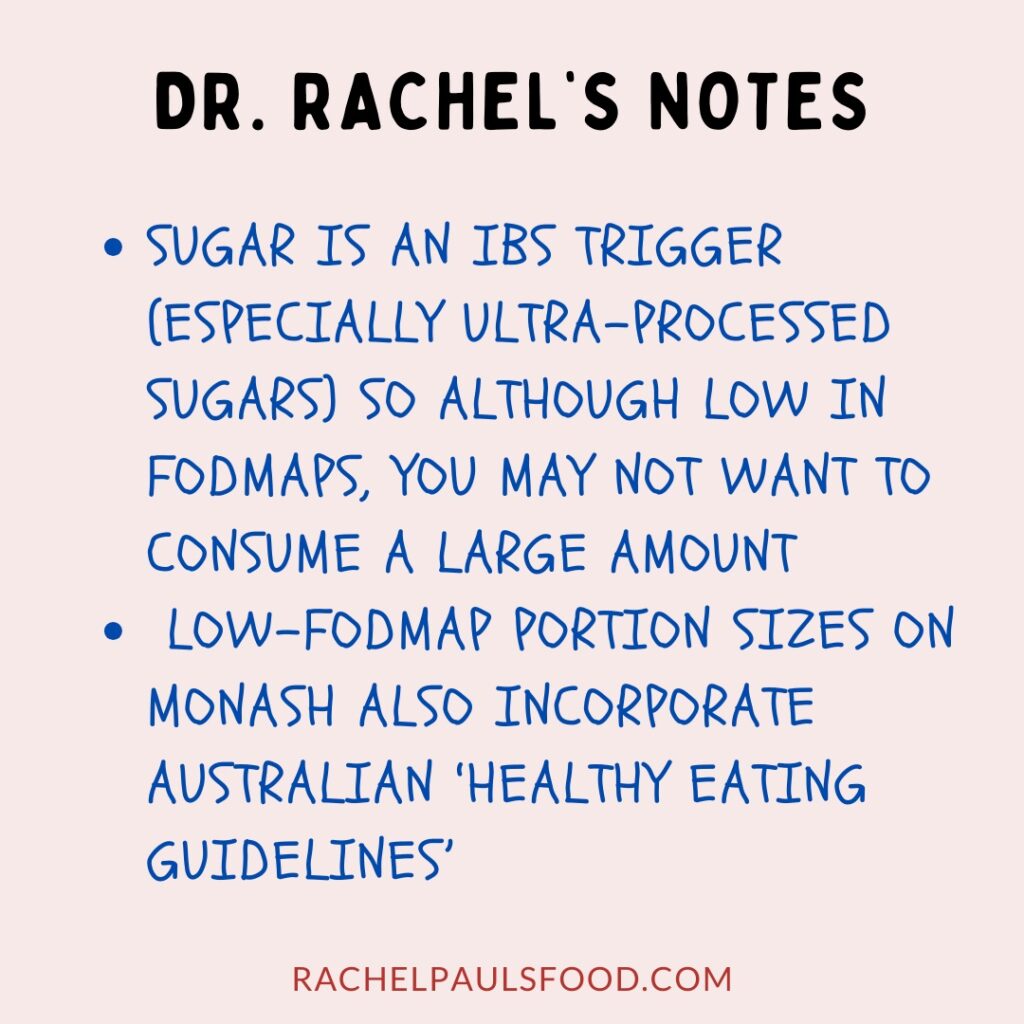
The only accurate resource regarding FODMAP levels are the two scientifically supported apps. These include the Monash Uni app, and the FODMAP Friendly app. I suggest you get both to have constant access to the knowledge you need.
Monash serving sizes for items are ‘overlaid’ with Australian healthy eating guidelines. Cutoff amounts do not reflect FODMAPs alone.
White Sugar
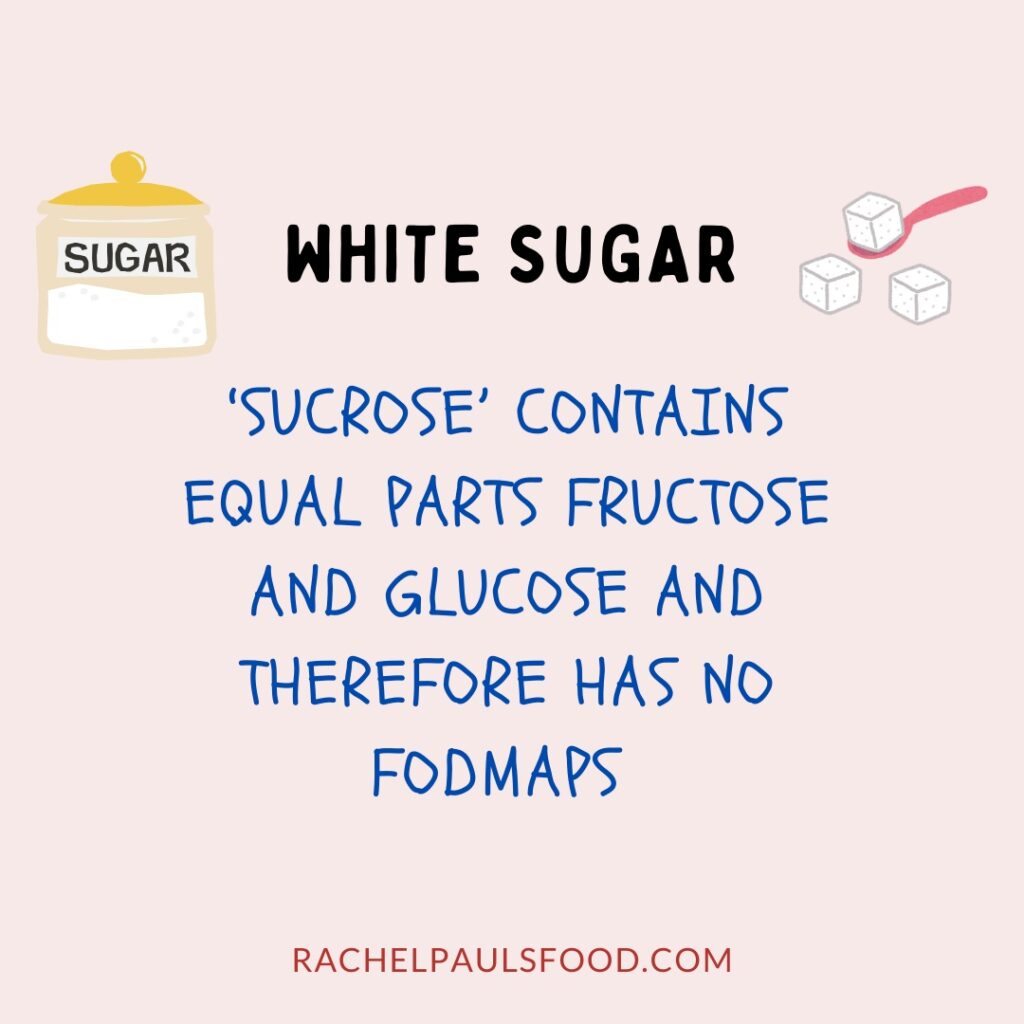
White sugar includes sugar cubes, table sugar, granulated sugar, castor sugar, confectioner’s sugar, and other similar products.
Whether white sugar comes from sugar cane or sugar beets, the products will be almost identical from a FODMAP standpoint.
White sugar is made up of sucrose, so it has no excess fructose. It is easily absorbed in the intestinal wall, and contains few FODMAPs.
FODMAP friendly lists a maximum serving size of 20 tablespoons (260g), but I would not recommend having that much at a time!
Brown Sugar
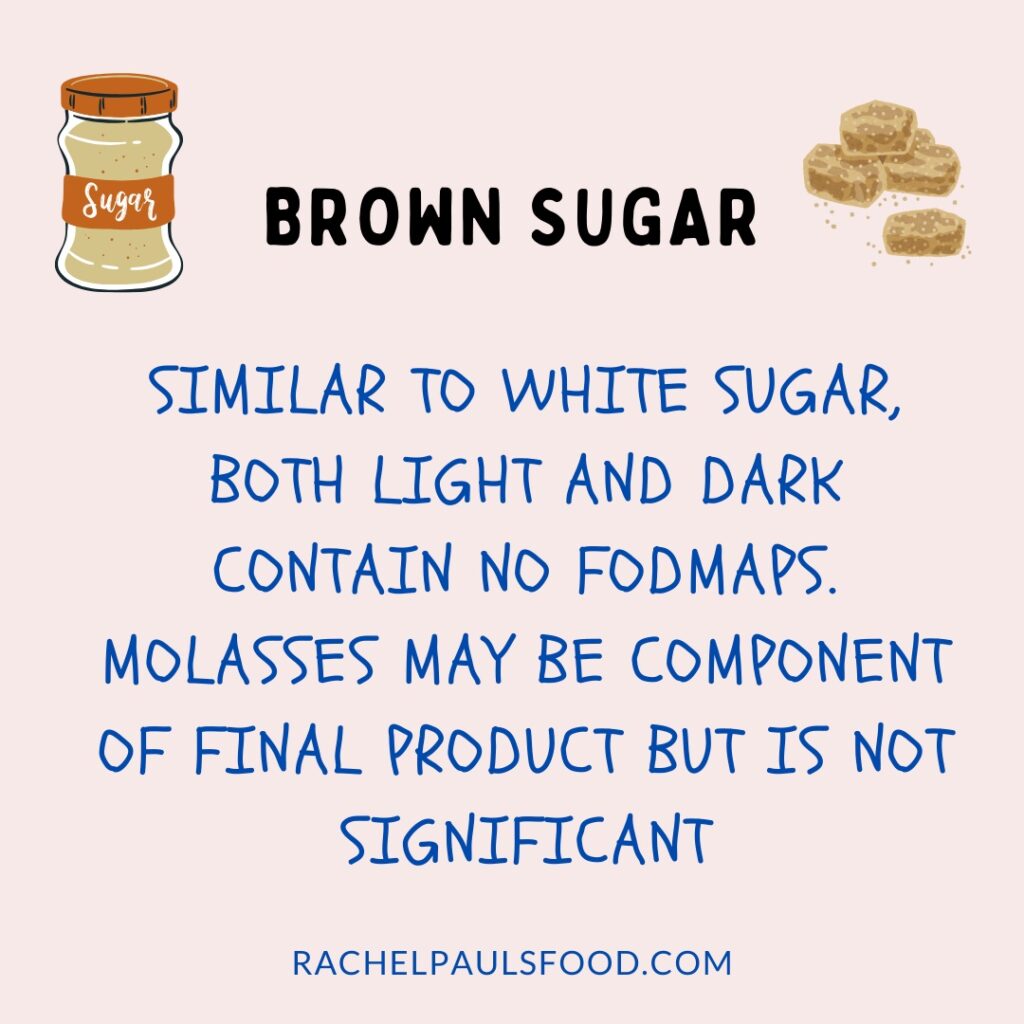
Like white sugar, brown sugar contains few FODMAPs. The brown color often comes from a small amount of molasses in the product, but that is negligible for your digestion.
FODMAP Friendly lists a maximum serving of 20 tablespoons, the same serving size they note for white sugar.
Maple Syrup
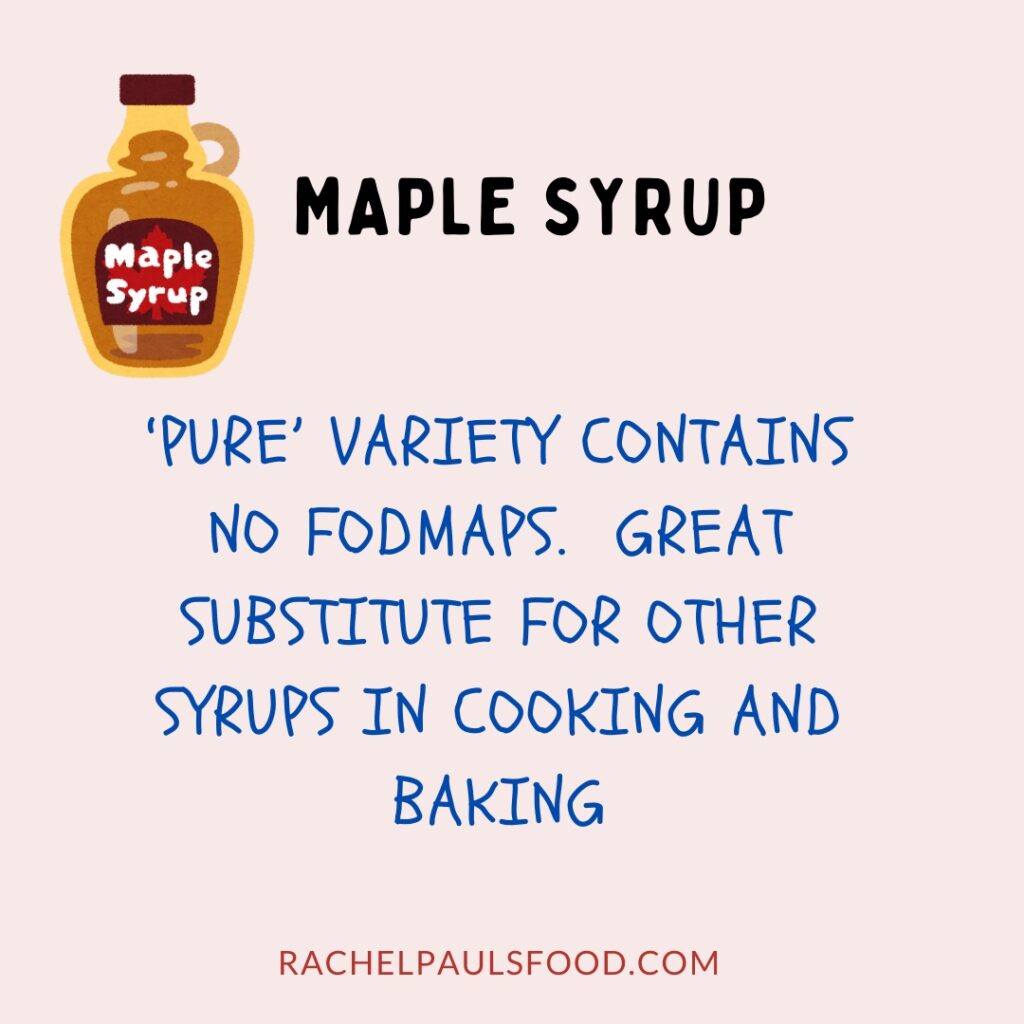
Pure maple syrup contains no FODMAPs. One of my favorite ways to add sweetness to baking.
FODMAP Friendly lists a maximum serving of 50 tablespoons (1 liter).
Honey, Agave, Molasses
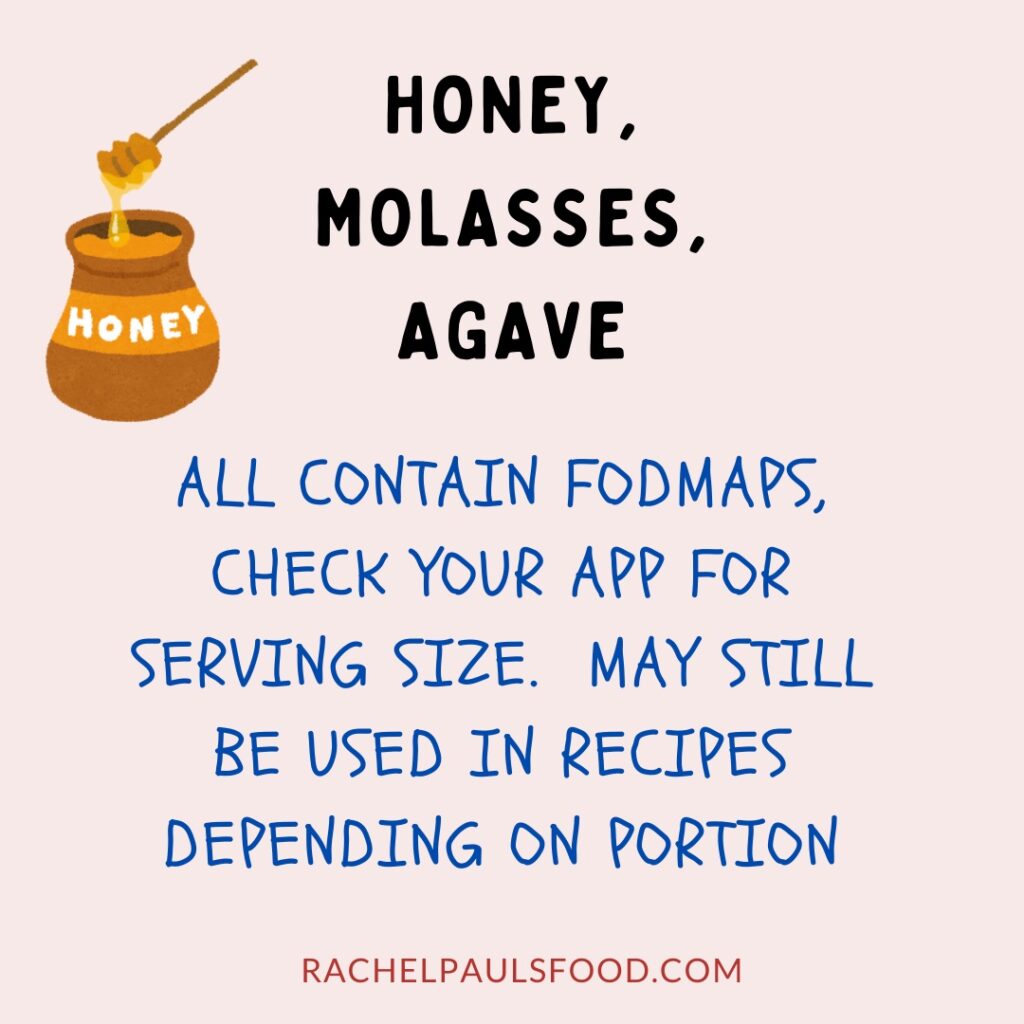
All three of these syrups are high in FODMAPs.
Honey and agave are high-FODMAP due to their concentrations of fructose.
Molasses composition varies (different color and manufacturing techniques), but FODMAP data has not specifically quantified these for our information. Therefore, I suggest avoiding molasses, unless in very small amounts.
Honey: Maximum serving of 1 ml per FODMAP Friendly.
Agave: Maximum serving of 0 ml per FODMAP Friendly, 1 teaspoon low-FODMAP per Monash.
Molassess: Maximum serving of 5 ml per FODMAP Friendly.
Corn Syrup
Corn syrup is not currently mentioned in either Monash or FODMAP Friendly apps. I believe it is not a common ingredient in Australia, hence it is not a priority for them to delineate.
Corn syrup is produced by hydrolyzing cornstarch into glucose. Glucose is low in FODMAPs, therefore the consensus is that both dark and light corn syrups should be easily digested.
High-fructose corn syrup is a COMPLETELY DIFFERENT PRODUCT. Do not confuse these two! High fructose corn syrup is basically fructose and should be avoided.
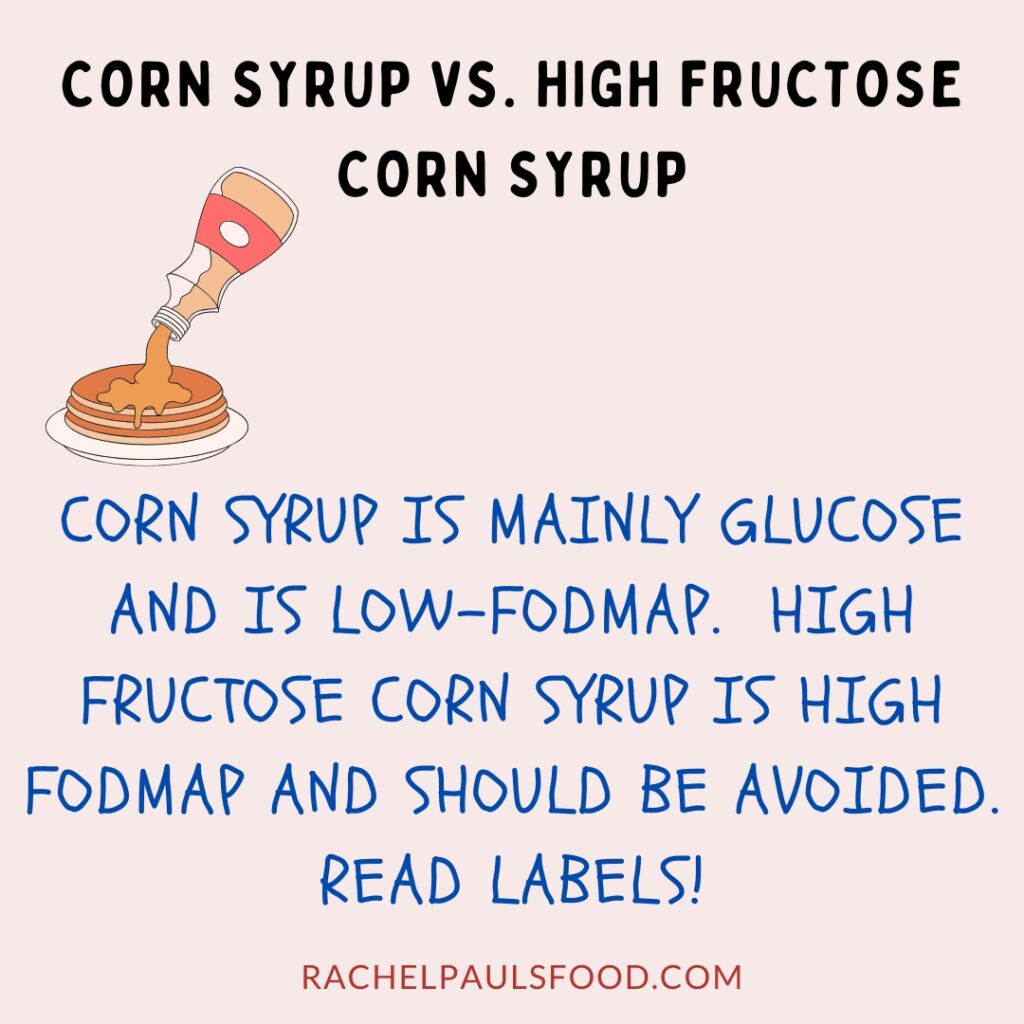
Glucose
Glucose syrup is low in FODMAPs. This ingredient may be found in processed sweets and desserts.
Fructose
Fructose is high-FODMAP. Be cautious when consuming candies and snacks with this ingredient listed.
Golden Syrup
Golden syrup is more common outside the United States. It is high in fructans.
FODMAP Friendly has a maximum low-FODMAP serving of 10ml; Monash recommends 1 teaspoon per serving.
Invert Sugar
A sweetener similar to sucrose, this is considered low-FODMAP.
Cane Syrup
Primarily composed of invert sugar and sucrose. Although not reported in the apps, cane syrup is considered low-FODMAP.
Other Syrups
Yacon Syrup
Not lab tested but is high in inulin and presumed to be high-FODMAP.
Brown Rice Syrup (rice malt syrup)
Low-FODMAP depending on serving size. Monash lists up to 500g may be tolerated, however FODMAP Friendly has a maximum of 3 tablespoons. Test your product for personal tolerance.
Barley Malt Syrup
Low-FODMAP in 1/3 tablespoon (12g) servings.
Coconut Syrup (Treacle)
Low-FODMAP in 1/2 tablespoon (14g) servings.
Sorghum Syrup
Low-FODMAP in 2 teaspoon (20g) servings.
Other Sugars
Jaggery
Low-FODMAP in 1/2 tablespoon (12g) servings due to fructans.
Coconut Sugar
Low-FODMAP in 1 teaspoon (4g) servings due to fructans.
Artificial Sweeteners
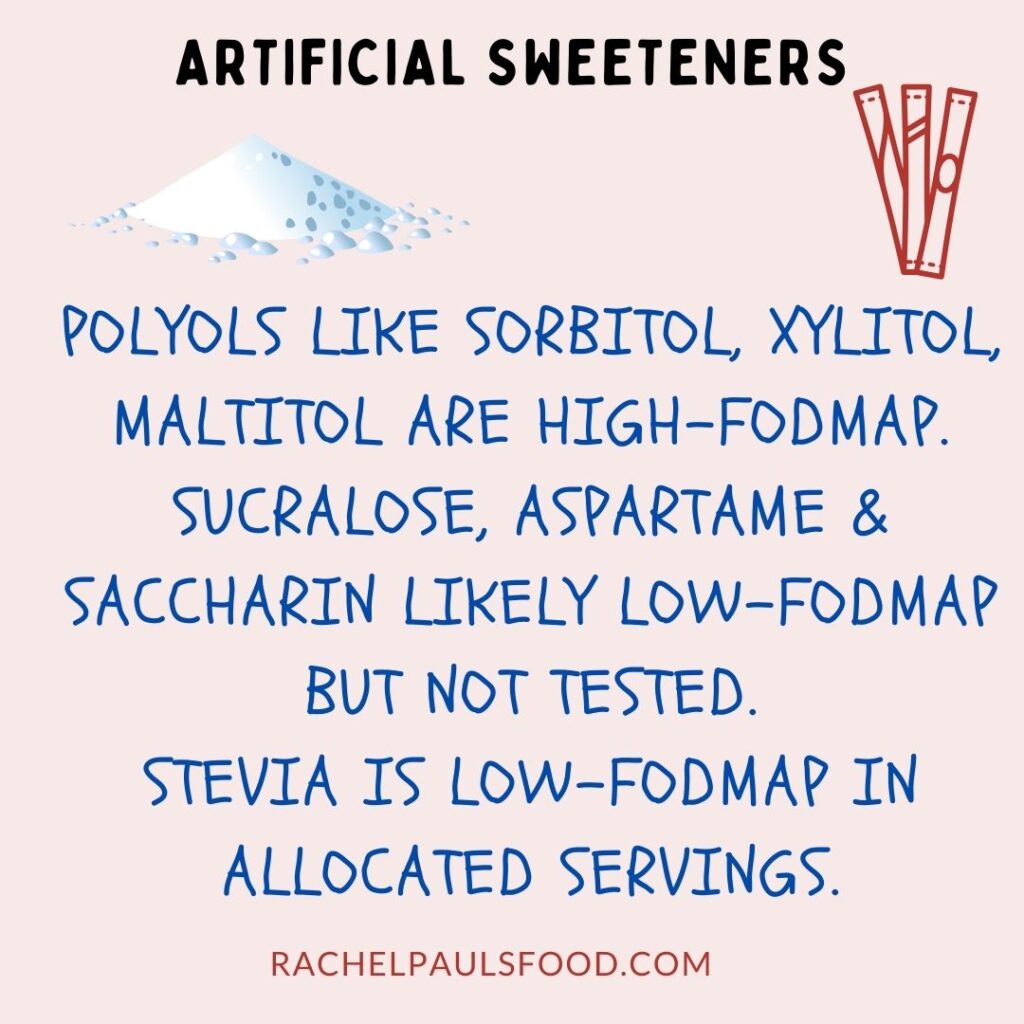
Sorbitol, Mannitol, Xylitol, Maltitol, Isomalt
These are polyols, and are the “P” in the acronym above. Avoid when possible (a common ingredient in sugar-free gum and mints).
Aspartame, Sucralose, Saccharin
Although none of these have been formally FODMAP tested, all are considered low-FODMAP in modest servings.
Stevia
Stevia has FODMAP information available. Monash lists a low-FODMAP serving size of 2 teaspoons (5 g).
Erythritol
Erythritol is mentioned separate from the other polyols. It has a different GI absorption, and therefore may be tolerated. I suggest testing for your personal thresholds.
Monk Fruit
Not tested, assess for your personal tolerance.
Allulose
A novel artificial sweetener that has FODMAP certification. FODMAP Friendly lists a 30g serving size.
Artificial sweeteners are prevalent, but their impact on our gut microbiome and overall health is unclear. I don’t typically endorse them as a part of a balanced diet, other than small quantities.
My recommendation is to stick to low-FODMAP fruits, vegetables, whole grains and homemade baked goods. I have tons of recipes that you can try!
One of the reasons I was inspired to write my 2 books, was to guide people through the low-FODMAP diet, from elimination to personalization. Click this link to see them on Amazon!
You may also enjoy:
- Dr. Rachel’s Low-FODMAP Onion Substitutes
- Dr. Rachel’s Recipe Ingredient Switches, Swaps & Substitutions for the Low-FODMAP Diet
- Dr. Rachel’s FODMAP Facts: LOW-FODMAP MILK OPTIONS
- Dr. Rachel’s FODMAP Facts: Are Bananas Low-FODMAP?
- Dr. Rachel’s Low-FODMAP Garlic Substitutes
- Dr. Rachel’s Low-FODMAP Diet 5-Day Meal Plan; Recipes and More (IBS-friendly!)
- Dr. Rachel’s Guide to Starting the Low-FODMAP Diet
Or over 600 more low-FODMAP & gluten-free recipes!
Be healthy and happy,
Rachel Pauls, MD
This article is based on the available FODMAP data at time of posting




